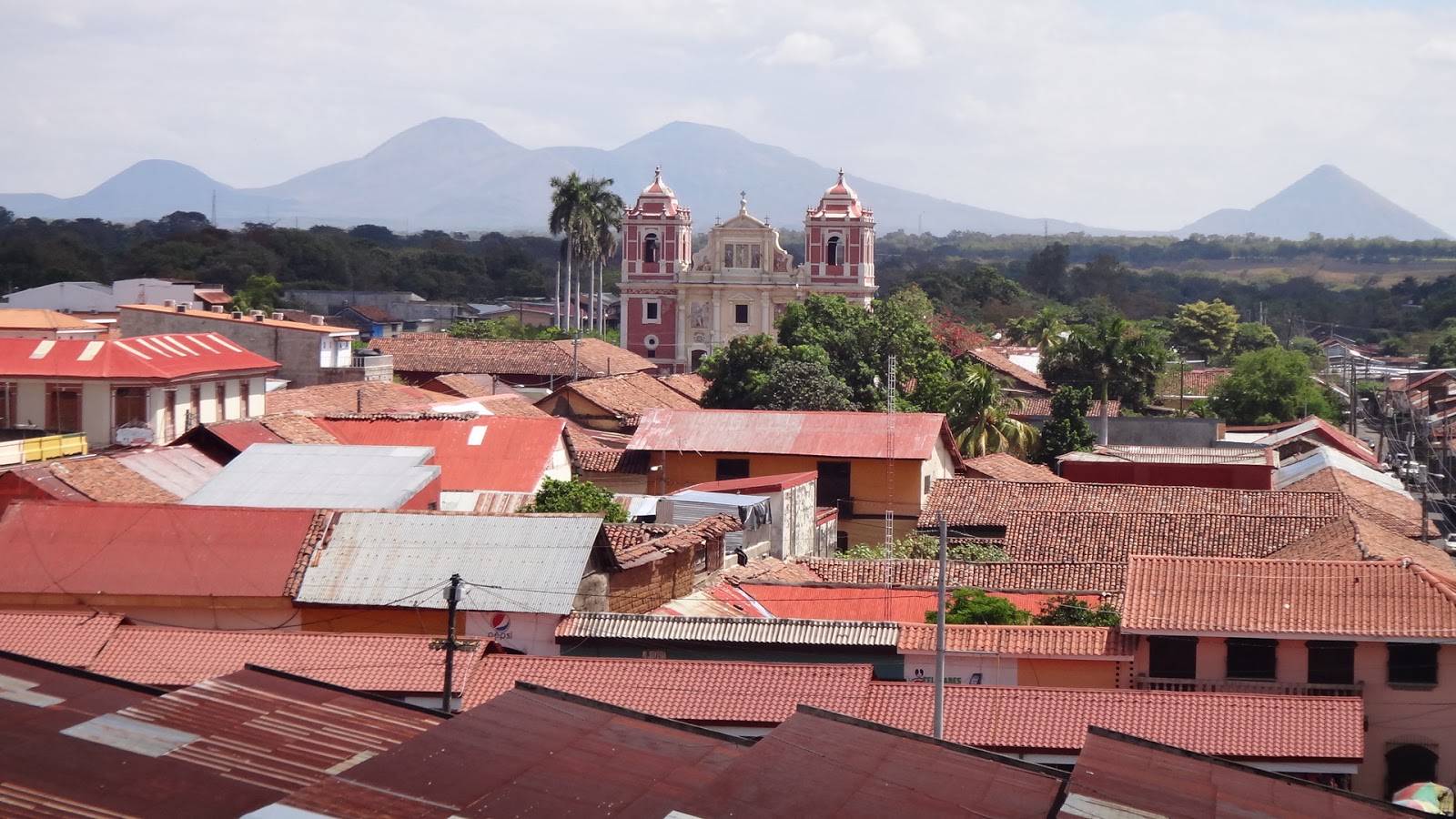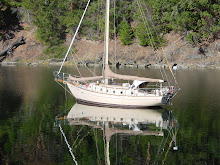Bahia Huevos, Costa Rica
These last 3 days have been pretty exciting, making some real progress for a change.
With the weather prognosticators telling us that we had a great window for getting past the notorious Papagayo winds, we checked out of Nicaragua and left the marina at Puesta del Sol at 11:45AM on Wednesday, Feb 26th. The winds were predicted to be no more than 10 to 15 knots, for maybe 8 or 10 hours on early Thursday morning - otherwise we could expect pretty calm conditions. Maybe, as sailors, we should not be excited by promises of "no wind", but right then that sounded pretty good.
As soon as we left the estuary, some 12 knot winds came up from the west. We were able to sail quite nicely for a few miles until the seas became very rough and the winds climbed into the 15 to 20 knot range. We ended up very close-hauled and motorsailing into the waves. Susanne, predictably, succumbed to the bad conditions and was quite sick.
The winds abated in the evening, Susanne felt much better, and we were able to sail for a few more miles before the wind dropped to under 5 knots. We motored through the night and early morning hours. I had a lot of fun dodging an incredible number of pangas with very bright lights - fishing no doubt.
At around 9AM, the winds came back with a vengeance. These winds were the start of the true Papagayo winds, almost dead on the nose, coming across from the Caribbean and sweeping across Lake Nicaragua. These blew off and on for the rest of the passage, sometimes dropping to 12 to 13 knots, then blowing in excess of 20 knots. For most of the trip, I was forced to use the engine to allow us to keep hugging the coast to avoid the large seas that these winds stir up a few miles offshore (with the engine helping the sails, I could keep us pointed much more directly into the winds).
When we finally made our turn for our final run of 20 miles across the Golfo de Santa Elena, toward Bahia Santa Elena in Costa Rica, around noon, we were able to kill the engine and had a beautiful sail on a broad reach in 15 to 20 knots of wind, all the way to the entrance of the bay. The wind would actually pulse, sometimes blowing only 10 knots, then increasing suddenly to 17 to 20. When the winds were light, we were going around 3.5 to 4 knots, when they winds blew hard, we made an incredible (for Sine Timore) 7 to 7.5 knots. We made good time and were able to get our anchor down in Bahia Santa Elena by 4PM on Thursday - after spending almost an hour trying to get our chain out of the chain locker - all the bouncing around over the last couple of passages had resulted in a real rat's nest in there. This is a beautiful spot, but we had decided to push on while we still had a favorable forecast.
Today, Friday, we made the push to get around Cabo Santa Elena, one of the most feared spots on this coast. This time we caught the weather gods napping. We had an excellent passage. Smooth seas and gentle breezes. We were even able to sail a good portion of the trip across the Golfo de Papagayo, in an unusual on-shore west wind.
Now we find ourselves in a little bay called Bahia Huevos. It is a little rolly right now but I think it is a result of the unusual wind direction today. By tonight and tomorrow, when the Papagayo winds start blowing from their usual NE direction, we should be very sheltered here. If the conditions are OK, we may stay here a couple of days. Since we got here late in the afternoon, and tomorrow is the start of the weekend, we cannot possibly check into the country of Costa Rica until Monday. Thus there is little reason for us to go anchor off the town of Playas del Coco just yet.
Note: We saw quite a lot of wildlife on this passage. Birds, fish, turtles, dolphins and whales all made their appearance. And we were treated to an incredible display of "bio luminescence" during Wednesday night - spectacular green glowing wake beside and behind Sine Timore.
Note: Total distance covered over the last 3 days: almost 200 miles.
{GMST}10|55.029|N|85|47.3274|W|Bahia Santa Elena, Costa Rica|Bahia Santa Elena, Costa Rica{GEND}
{GMST}10|38.3556|N|85|40.704|W|Bahia Huevos, Costa Rica|Bahia Huevos, Costa Rica{GEND}
-



























































